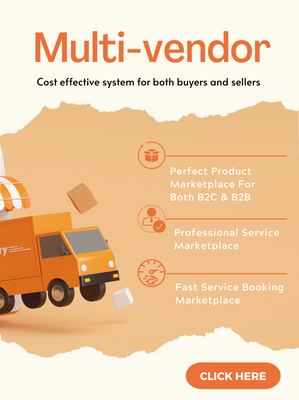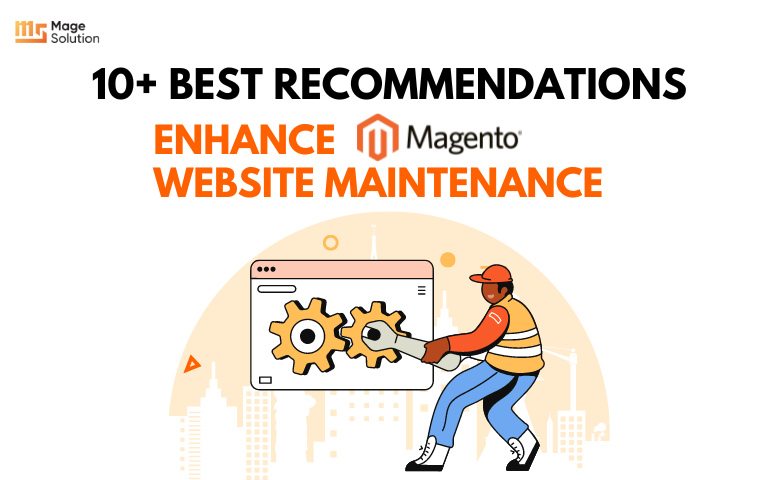Your cart is currently empty!
Biggest ecommerce challenges and effective solutions to overcome them in 2022
Leaders across the globe encounter many eCommerce challenges while adapting to the digital commerce business. In this post, Magesolution will show you the 12 most common eCommerce challenges and solutions to overcome them in 2022 while working towards building successful eCommerce platforms
E-commerce websit is online portals that facilitate online transactions of goods and services through means of the transfer of information and funds over the Internet. In the early days, e-Commerce was done partially through emails and phone calls. Now, with a single website, anything and everything that a transaction needs, can be executed online.
With the use of mobile devices and laptops increasing every day, there are a lot of advantages of e-commerce website like –Global market reach, A global choice for consumers, Short product/service distribution chains, Lesser costs and pricing, etc. There are some top e-commerce websites: Amazon, Taobao, eBay, Alibaba. Along with these utilities when using e-commerce website, online retailers have to face up with more and more challenges which require them to propose many solutions to handle.
Problem
1. Starting an e-commerce website with low sales
This is a relatively common situation when a new e-commerce website is up and running: For a few months selling only a small quantity of products or an empty shopping cart even after the marketing strategies have been run. Perhaps your campaigns are not really effective and optimized.
Solution: Partner with companies that help you target your potential customers. Digital marketing is preferred over traditional marketing because they can target your potential client. While this might not happen overnight, with A/B testing, finetuning and analysis – your products could be showing up to potential clients on different social media platforms. Moreover, marketing is also a must-have factor when your sales are low or stagnant. Think about optimizing your social media pages to boost sales through websites such as Facebook. Instagram; promote collaboration with reputable advertisers. Besides, sharing your free product providing your product more opportunity to reach potential customers.
2.Being Consistent
Consistency is the most important element while creating a successful omnichannel strategy. Shoppers use multiple platforms to search for products before making a decision which requires businesses to offer seamless purchasing encounters through every product or service they provide.
However, analyzing and understanding shopper interactions across all touchpoints and using it to crease consistent and seamless customer experience is one of the big eCommerce challenges for retailers.
Solution: Business can optimize their online platforms to provide complete consistency between search options, various shopping pages, and shipping details. This will support them make the shopping experience seamless for the customers. They should work on product quality, fulfillment, and distribution as well.
3. Approaching to customer’s
Customers now have changed their shopping methods. For example, they use Amazon to search for products (not just Google), request suggestions on social media, use their smartphones to read product’s reviews while in the e-commerce website, and make a purchase by all payment methods.
Solution: A lot of things have changed including the methods the online shoppers absorb content and communicate online. They are easily distracted with technology and social media. So store owners need to find out where their potential customers is and how to effectively attract them without losing their marketing budget. For example:
- Personalized queries, ads, and services.
- Simple, easy-to-navigate digital channels.
- Product information that is as complete and reliable as in a physical shop.
- Self-service option.
- Simple returns — free or at a low rate.
- A variety of shipping and pickup options.
- Different payment methods, including gateways like PayPal, Apple Pay, Google Pay, WeChat, AliPay, etc. Even cryptocurrencies could see an increase in 2021.
- 24/7 customer support.
4. Converting potential buyers into paying customers on e-commerce website
The only problem is that sales often start low, very low, for completely new e-commerce websites. Unless you end up advertising your products on the Shark Tank before you launch your e-commerce website, you can really expect a lot of sales going through the website.
Promoting quality traffic and nurturing potential customers is key if you want to close sales. At a given time, you need to convert those leads to pay for your marketing campaigns. Retailers must constantly optimize their efforts in converting both email leads and website visitors into customers. Conversion optimization is an ongoing process.
Solution: The first and foremost would be to understand why your customers aren’t converting – are you targeting the right users? Is your mobile website working seamlessly? Do your online platforms encounter technical challenges all the time? Does your shoppers base trust you? Do you personalize your site for your customers? Always think from a customers’ perspective and see if you are doing everything possible to make them paying clients.
5. Having long-term profits when running your e-commerce website
Increasing sales with e-commerce website is a way to grow your business. But ultimately, the most important thing is profit.Online retailers must always find ways to cut inventory costs, improve marketing efficiency, reduce costs, reduce shipping costs and control profitability of orders.
Solution: Determining the best profit margin formula for a single product can support you figure out how to find net profit margin and enhance profitability for your business. For example:
- Reduce operating costs
- Don’t obsess over per order profits
- Increase the trustworthiness of your store to generate sales
- Increase your average order valueCreate a customer loyalty program
- Raise your price
6. Competing with major e-commerce sites
The internet offers everyone an equal platform and hence an equal opportunity. This makes the environment extremely competitive, with possibly hundreds of other businesses offering the same products or services to the same target audience. Even the most niche brands have to fight hard to carve a place for themselves. Every segment in the eCommerce space is set to get increasingly congested and competitive over the years.
A homegrown startup has to keep pace with a multinational giant and vice-versa. Enterprise is continuously experimenting to come up with an innovative eCommerce business solution to gain an edge.
Solution: This challenge can be mitigated through thorough research and competitive analyses. It is important to categorize the competitors and frequently observe and assess the components of their websites. Characteristics to watch closely are pricing, the website design, products on display, and even the marketing tools and techniques they use. There is ample to learn from the strengths as well as the weaknesses of the competition.
By closely researching successful social media accounts, blogs, websites, and email campaigns, businesses can gain a more insightful understanding of the eCommerce landscape. Analyzing the competition can guide a business in its strategy and help them decide which direction to take.
7. Losing with fraud, transportation and refund
Besides the positive effect with sales, irresponsible and fraudulent customers become burdens that no retailer wants to encounter often. This happens when a carrier loses a parcel, a customer does not pick up or return an item or a fraudulent purchase is made to test and take advantage of your company.
Return binding on customer service and follow up with the customers. Send an email to find out why they don’t like this product and maybe even a discount on their next order.
Cheating is the biggest problem of all of them. Imagine you receive an order worth tens of thousands of dollars, after shipping products, you discover they have bad- learning from your company or even steal all that product from you. According to KissMetrics, there are many different ways to prevent e-commerce fraud, from choosing the right e-commerce platform to maintaining files about past fraudulent charges.
Solution: The short answer is always research before shipping your items, especially for large orders. Use an automated system to cross-reference purchase and shipping information. Call the customer if you suspect fraud or if the area code matches.
8. Hackers
This is something retailers can hardly predict, even when hackers have exploited a few things, they still do not discover: personal information, customer data, customer sources, bank account, etc. Be very careful and don’t hesitate to invest in security and protect your e-commerce website
Solution: Be vigilant and always back up your data. Post that, you can install security plugins onto your website to prevent it from getting hacked. There are several plugins out there, pick one that works best for your eCommerce website.
9. Providing excellent supports for customers
Many companies pride themselves on superior customer service. However, working with online customers is a different and unique thing, especially when your e-commerce website is bound to kick some dirt on your face them along the way.
Customer care is a challenge for online retailers. It always make them their top priority to make sure they do not complain, yell or post blogs about how your company has lack of services
Solution: There are several ways to improve the user experience. The most important would be to have a clean and simple website so that shoppers can navigate through easily. The next point would be to have clear CTAs (call to action) so that the shopper knows exactly what to do
10. Inventory management
Another problem that comes with an e-commerce website is overall inventory management. What happens when the vacation comes and you run out of best selling products?How would you answer if a customer orders twice as much as you can offer?
The key to organized inventory management. Do you know exactly how many pairs of shoes you have in stock for each color and design? You should have a running report every day to understand where your inventory stands.
Solution: Another key factor is choosing an easy tagging system and managing every item you have in the store. You need a platform that allows you to quickly change a page to Out of stock and a product ID system to get a real-time view of your prices.
11. Working with overseas manufacturers and suppliers
You might think there’s nothing better than working with foreign suppliers and manufacturers. Their products that are more diverse and more affordable. But don’t forget the issues that always arise: Language barriers , quality control and business culture.
Solution: You encounter all these problems, some of them more than others. Consider hiring a translator or just choosing a manufacturer who can speaks your language.In terms of quality control, check your foreign contacts and emphasize that you hold Skype calls or sessions every week or month to understand what is happening in terms of productivity. It’s also not a bad idea to hop on a plane and meet foreign manufacturers.Business culture is difficult to manipulate, because some countries only operate differently from you. You may find that one country is not punctual or another is not aggressive. The only solution is to learn about the culture of the country where you intend to do business.
12. Choose the right technology and partner
Some online retailers may face growth challenges because their technology is restricting them or they have hired the wrong partners / agencies to help them manage their projects.
Retailers who want to achieve growth with e-commerce website must be built on good technology. They have to choose the right shopping cart solution, inventory management software, email software, CRM system, analytics and more.
Solution
There are a lot of platforms such as Clutch that provides detailed client reviews of software development companies across the globe, it is relatively easy to search the right outsourcing partner for an eCommerce business. Business leaders should thoroughly research the company’s past work and expertise to decide if they are a best suitable collaborative fit. Moreover, you need to discuses project expectations, understand their past work experience, and make Suring that the eCommerce web development company is aligned to providing modern-day solutions such as agility and digital transformation helps make the right choice.
What’s Next?
Whether you need help to design an ecommerce website or re-platform your current commerce solutions, make sure to check out our Magento Consulting Service and Ecommerce Strategy. At Magesolution we provides you with a team of experts who are ready to help you achieve your business goals. Talk to our experts for help with building an eCommerce strategy.



